To understand the need for temperature and humidity control in your greenhouse, there are a few basics you need to understand about what plants need to survive. Therefore, I am going to start with the basics: Biology 101.
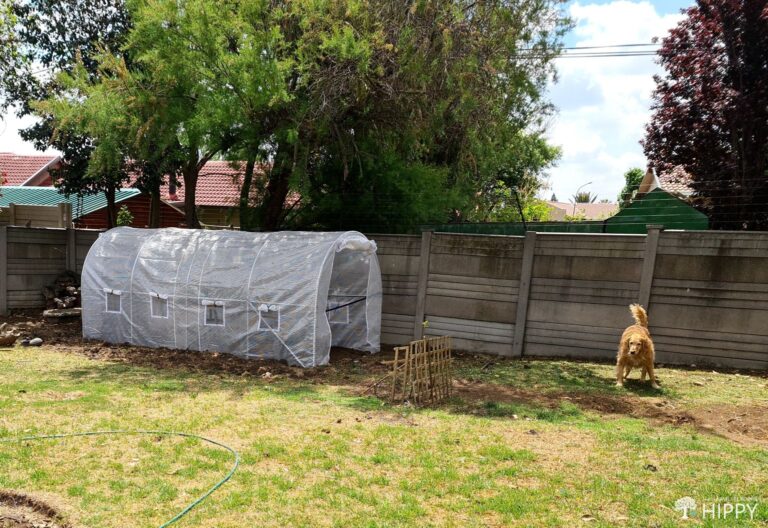
What does a seed need to grow?
Your seed needs nutritious soil to grow in. Your seed needs heat and light. Your seed needs water from the air and or the water table.
The first part of the plant that grows from your seed is the roots. The roots reach either straight down, or they branch out almost horizontally.
The roots are the part of the plant that draws up nutrients from the soil for the plant to grow. They need to move the nutrients to all the parts of the plant that need them using water as a transport system.
The stem and leaves are next. Soon you have a beautiful flower or tasty vegetables.
Water flows in one direction only, up from the ground through the stem to the leaves and flower.
Think of a straw, you cannot drink water through a straw by blowing into it, it is a one-way passage for drinking.
Plants have the same concept, they draw water up, they do not take in anything but heat and light through their leaves. The roots draw the water up from the ground and carry it up into the stem, leaves, and flowers, fruit, or vegetables.
They don’t actually need to drink though, the only purpose the water served was being the Uber to transport the nutrients up through the plant.
So, what happens to the water once it has served its purpose? On the leaves of the plant are tiny holes called stomata.
The water is evaporated into the atmosphere through a process called transpiration.
But then, you thought, “I think I want to grow vegetables all year long.” To do that, you will need to preserve the heat around the plants and give them ample light all year round.
So, you put up a greenhouse to give you that quiet place to contemplate life in peace and quiet while you live a healthy life full of fresh, inexpensive vegetables all year.
So, you harness the sun’s heat and light with glass or see-through plastic walls.
But now that your plant is enclosed, there is nowhere for the water that is being released through transpiration to go. It is trapped in the greenhouse.
Here comes the catch, when you put up your greenhouse, you trapped all the moisture the plants are transpiring through the stomata on their leaves. That water is not evaporating, it will just keep building up inside your lovely greenhouse until fungus, mold, and disease creep in.
The water condenses on the walls and is filtered back into the water table, causing the water table to rise.
Soon white rot, viruses, and bacteria begin to form on the leaves. Fungus begins to grow on the plants, the walls, and in the ground. Spores are released and have nowhere to go.
All your plants die, and the greenhouse is so full of spores it is hazardous to your health.
Suddenly, your greenhouse went from being a tool to a healthy lifestyle to a threat to the lives of you and your family. You are breathing in and consuming spores that could lead to health issues.
Table of Contents
What Went Wrong In My Greenhouse?
Are you worried yet? Don’t be!
What you did wrong is you did not manage your temperature and humidity.
You just need to adapt the environment inside your greenhouse to imitate the environment your plants would ordinarily grow in.
In a nutshell, you need to monitor and adapt your heat, light, and moisture. Light and heat in this case are the same tools, but they are interdependent when you take into account the different seasons.
You needed to open the doors and windows and provide fans or heaters when needed to ventilate the air to remove excess water building up inside.
The basic principle of a greenhouse is to create an environment that simulates a good growing time (by season) year-round. It traps heat and light inside giving plants great exposure for photosynthesis.
The main idea is to protect plants from extreme cold and frost. But heat can also be deadly to leafy plants like lettuce, cabbage, and spinach; it is, therefore, important to properly manage the temperature and humidity inside of your greenhouse.
The ideal temperature for a greenhouse is between 80 to 85 degrees Fahrenheit (26.5 – 29.5 degrees Celsius). You want humidity, but you do not want your humidity to be too high as high humidity can foster viruses, fungi, and mold.
At 80°F (26.5 C), humidity should be 40 to 85% depending on what plants you are growing. But how can you maintain this ideal environment in your greenhouse all year round?
There are greenhouse thermometers and humidity sensors readily available. These can be linked to automated systems that adjust the temperature and humidity via fans, windows, humidifiers, and other means I will discuss below.
No matter where in the world you live, what your summers are like, what your winters are like, or what you are growing, there are ways to manage your greenhouse temperature and humidity with varying degrees of effort and cost.
The temperature inside your greenhouse will also directly impact the humidity in your greenhouse. So here are some ways to monitor and control the climate in your greenhouse.
11 Ways to Control Temperature Inside a Greenhouse
In winter you want to warm your greenhouse and in summer you do not want it to get too hot and humid inside of your greenhouse. Your plants need heat, light, moisture, and good soil to thrive.
Some of the biggest challenges people experience when growing plants in a greenhouse are controlling consistency, transpiration, and condensation. We often plant in the wrong place and provide way too much water – which is not needed.
During transpiration – the process of drawing water up through the roots, moving it through the plants, and eventually evaporating it through the stomata in the leaves – only a very small amount of water is actually used for growth and metabolism. If your humidity level is right, very little water will be needed.
Automated Temperature Controls
A greenhouse thermometer is an essential piece of equipment for regulating the temperature inside the greenhouse.
Using an automated vent opener or an automated switch to turn on fans and heaters takes a lot of the guess work and the concern and labor off your shoulders.
Automated temperature controls constantly monitor the temperature inside the greenhouse.
As soon as the temperature strays outside of the minimum/maximum temperature range, the system opens or closes windows, or turns on either the cooling or the heating system based on the need.
As soon as the temperature stabilizes (drops or rises) the system adapts accordingly to maintain the constant temperature.
Location
The easiest solution is most often staring you dead in the face: location, location, location!
No matter where you live, the sun’s position changes with seasons moving shade to different sides in the morning and afternoons. This is a constant. Think about this when you are planning to build your greenhouse.
In summer, you will want the greenhouse to have shade, but still have lots of light, during the hottest part of the day.
In winter, you will want your greenhouse to have sun all day long. Study your garden or property for shadows during the day to see where this can be achieved.
Because of the sun’s positioning through seasons, the position you choose for one season (when you are installing your greenhouse) will also be the correct position for the other season.
It is best to decide on a location based on the summer sun as you do not want your greenhouse to overheat in summer.
Consider the sun’s movement through the day, access to water, summer and winter temperature, and trees or buildings that will cast shade in summer and winter.
It is especially important to consider this for winter because that is when your plants will need direct sunlight.
Ventilation Systems
You can use an automatic ventilation system that is activated via a sensor that switches on fans or heaters as soon as the temperature drops or rises out of a preset range.
While this is my idea of a dream system because it requires little effort in maintenance, it may be a costly route to go because most of these systems are designed for commercial use (very large greenhouses).
There are small systems available and many make use of solar power so in the long term they are convenient and cost-efficient.
Ground to Air Heat Transfer Systems
A very popular way of controlling the temperature in greenhouses is the use of Ground to Air Heat Transfer Systems that simply harness the temperature below ground using pipes to allow air to flow from below ground into the greenhouse or in from the greenhouse back into the ground.
If you are building your own greenhouse, you should absolutely consider building in a Ground to Air Heat Transfer System.
It uses a fan to push air through pipes that are buried below the greenhouse that cycle cool air into the greenhouse during the day when it is hot and pushes hot air into the greenhouse at night or when it is cold.
This is popular because it is not very expensive to install or run and because it is very effective. It requires a lot of effort building it.
Fans and Heaters
There are heaters and fans that you can purchase to heat and cool your greenhouse. These can be very expensive, and they also carry a cost in terms of electricity.
Many of these are generally marketed towards big commercial farms rather than your quaint little greenhouse.
They may overheat or over cool the temperature in your greenhouse. It is therefore important to buy fans or heaters that are the right size for your greenhouse.
Extraction fans are popular, they feed air into the greenhouse or extract air from inside the greenhouse.
If the greenhouse is too hot, you would extract the air if it is too cold you would introduce warmer air from outside. They also reduce the humidity inside the greenhouse.
To conserve your humidity, it is advisable to combine your fan with a wet wall on the opposite side of the greenhouse. A wet wall is essentially a filtration system that just constantly has water flowing through it to introduce cold air to the greenhouse.
If you are going to use heating and or cooling, a small air-conditioning unit may be best. It will require less effort as you can simply set the temperature you require and let it do its thing.
However, air conditioners do tend to dry the air. This means that you will have to monitor the humidity very well, and supply humidity for the plants more diligently.
While I do not recommend it because products meant for home use are not designed for heavy-duty or long hours unattended, many people also use regular house fans and heaters.
Take good care that they do not overheat, that they will not be bumped over, and that they don’t have contact with anything they could set fire to.
There are plenty of solar options to choose from too, so they do not need to eat into your gas or electricity bill.
Natural Ventilation
Greenhouses normally have windows and doors. They are there for a reason, so use them.
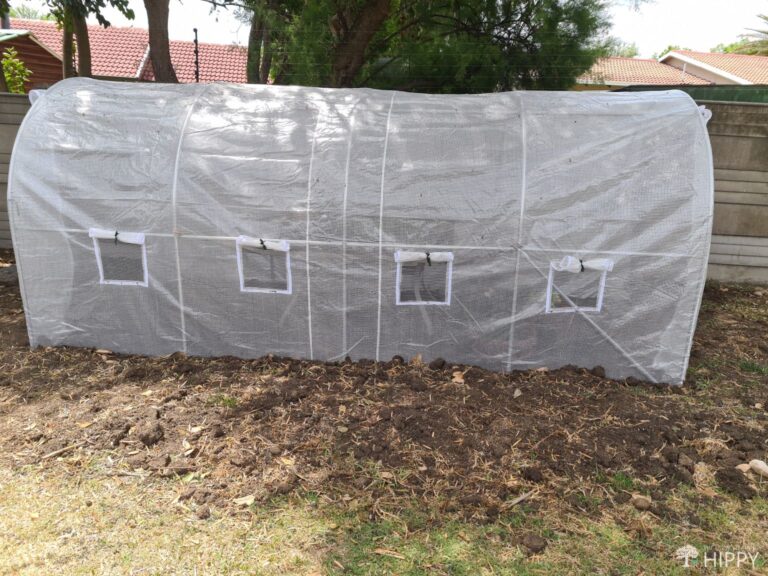
I am fortunate to live in a very windy place. Just opening both doors of my greenhouse provides great ventilation.
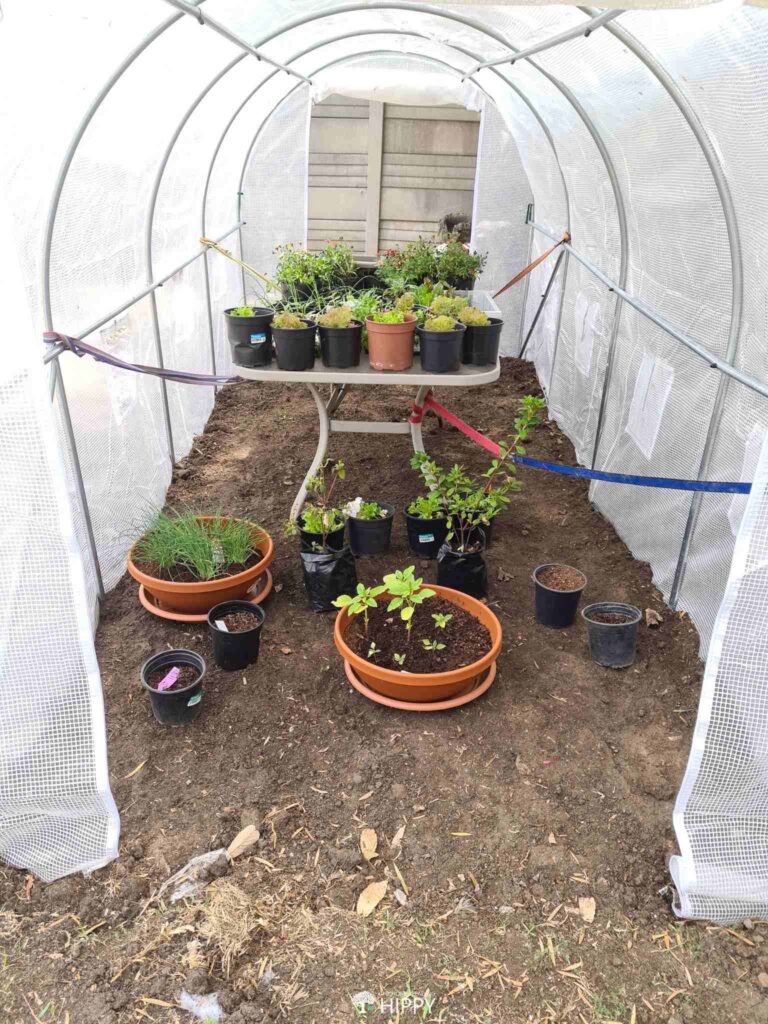
In summer, you can open doors and windows – day and night – to reduce the temperature and simply let air flow through.
Make sure you use a rock or a doorstop to prevent doors from slamming in the wind – that could cost you money. This is very important so that you do not overheat the greenhouse increasing the humidity to saturation level as this could bring mold, fungus, etc.
In winter, keep it buttoned up; open it up a little, maybe a window or two, during the day for ventilation.
Use Plants to Shade the Soil
Plant big, leafy plants strategically to shade the soil, so that the soil remains cool. This is a cheap and easy way to cool your greenhouse down.
You will still have the sun heating the greenhouse, but because the soil is cool your plants will do better. Big leafy plants also help contain the humidity by shading the ground.
Shade Cloth
If you find the greenhouse is still getting too hot in the day, or if you do not have a well-shaded area, you can buy ordinary shade cloth from any store that supplies garden supplies or any building supplies store. It comes in different colors.
Most stores sell it in green, which, if put up right, can look very attractive. However, dark colors absorb heat, meaning you could overheat instead of cooling down your greenhouse. It is better to go for white or a light-colored shade cloth that lets light through while shading the plants.
You can put up shade cloth on the inside or the outside to protect the plants from too much sun. It is easy to drape and roll up, so it is easy to use as, when, and where needed.
I have used shade cloth over vegetables myself, it works great for plants that need shade, but it does not control the temperature for winter.
I enjoyed working under the shade cloth so much, we used it to build a shaded patio by our pool. Inside a greenhouse with a table and chair for tea… I love it!
Misting and Fogging Systems
In hot weather, a simple misting and fogging system can be the ideal way to cool your greenhouse. These are available in gardening and building stores and online and can be tailored to the size of your greenhouse.
This system removes heat by spraying a very fine mist of water into the air removing the heat through water evaporation.
It is also fantastic because it introduces a stable stream of humidity for your plants.
The fact that it can be installed to the size of your greenhouse is great, but you need to keep your eyes open for mold and rot as these can be very dangerous for your health. Therefore, you should not run them all the time.
Cooling with Water
You can simply spray some water on both the inside and the outside of your greenhouse to help cool the temperature inside. Do not spray too much over the plants, just a little will do the job.
A simple water feature will bring a cozy finishing touch to any greenhouse and keep things growing.
Spray at the roof to get the effect of rain rather than spraying directly at the plants as spraying at the plants can shift the sand causing your plants to lean.
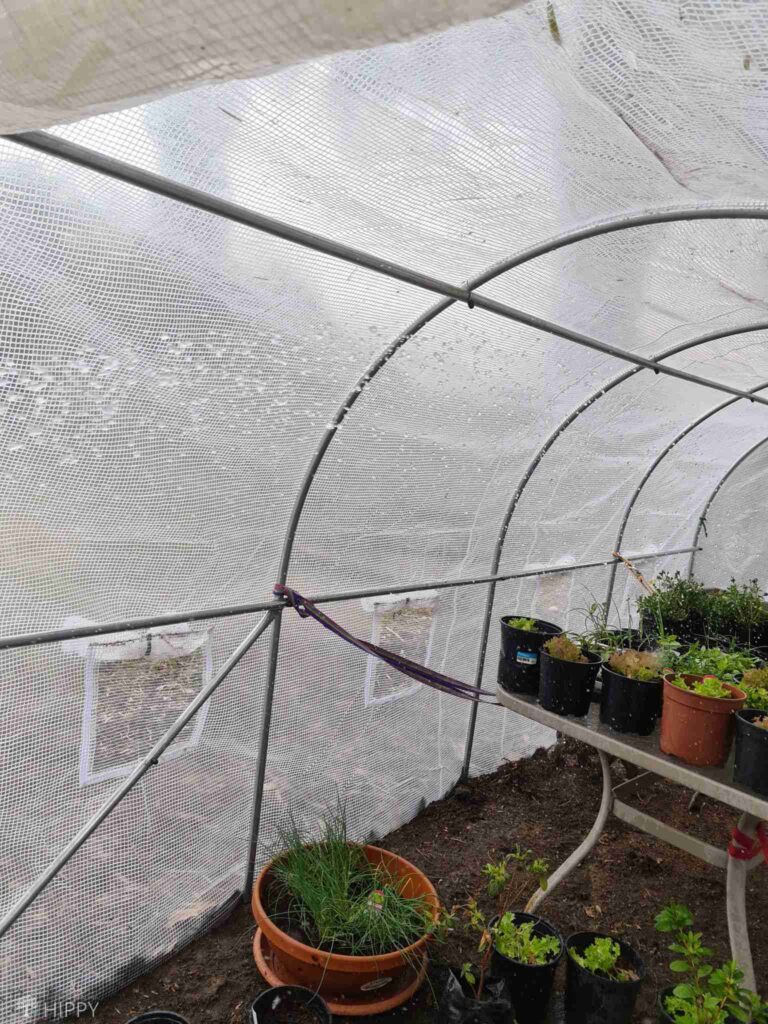
Water Tanks or Buckets of Water
You can put a big water tank or big buckets of water inside the greenhouse to cool the temperature down. Paint them black so that they really draw in the heat. The water absorbs heat cooling the greenhouse.
If you have a water tank, you can also plant aquatic plants like water lilies and lotuses in the tank and even keep fish in it. Make a feature of it. The plants will thrive, and your greenhouse will be cool and tranquil.
6 Ways to Control Humidity Inside a Greenhouse
Humidity and temperature are directly linked. The hotter the air inside the greenhouse, the higher the humidity. Humidity is good! You want humidity! What you don’t want is mold, fungus, bacteria, viruses, and all the dreadful illnesses you risk through exposure to these.
If your humidity is correct, you will hardly ever need to water your plants.
If you are seeing condensation on the leaves of your plants, it means there is too much humidity present.
Where you live is a key factor to know whether you will need to introduce better humidity or whether you will need to extract humidity.
If you live in a desert area, like Arizona, you will need to introduce humid air to your greenhouse. If you live close to an ocean where the humidity is high, you may (not will, you MAY) need to extract humidity.
For me, controlling humidity in winter while keeping the temperature warm is the bigger issue. We have heavy rain and heat in summer, but just opening the two doors of my greenhouse does away with excess humidity (the transpired water can escape and evaporate).
In winter it is cold and dry here, therefore I need to keep the doors closed and water more frequently, and also use my buckets of water.
The problem with that is we still have really hot days that come without warning. I still have to ventilate to reduce the humidity. Fortunately, the little windows are enough on most hot days and they do not allow too much heat to escape.
Many of the systems listed above for temperature control automatically introduce humidity or extract humidity:
- Location
- Misting
- Cooling with water
- Growing big leafy plants
- Water tanks or buckets of water
- Fans for air exchange
But there are other ways to manage the humidity in your greenhouse.
Automated Humidity Controls
As is the case with automated temperature controls, you can also control the humidity inside your greenhouse via automated controls.
Sensors monitor the humidity in the greenhouse constantly and automatically turn on misters, extraction fans, or humidifiers when the humidity strays out of your programmed range.
Automated controls save a lot of time and effort, but more importantly, with an automated humidity control there is less risk of mold or fungi setting in because your humidity is too high.
Drainage
Proper drainage is essential for maintaining good humidity. You do not want your plants drowning in water and rotting the roots and the wood of your beds.
Your plants should always be in pots or beds with a separate drainage tray or they should have rocks or pebbles in the bed underneath them.
Rocks and pebbles in the bed hold the water separate from the plants and cool the soil consistently while reducing humidity from the air or releasing it slowly into the air.
For my melons and squashes, I either use bricks or a chicken mesh frame to lift each melon or squash off the ground. As the plant grows, I gently train it to grow above the mesh.
When the fruit or vegetable grows, it is already off the ground with great drainage under it. I try for about four inches (+/- 10cms) because we get a lot of rain and our soil is clay, so it doesn’t drain easily.
If they are on the ground and your humidity is even just a little bit too high, they will rot very quickly.
Benches
Benches are tables built with wood or steel with built-in drainage holes. Under the table is a tray to collect the excess water as it is drained through. This draws water away from the plants so that they do not become waterlogged and rot.
Plants are grown off the ground where water cannot pool under them.
Most people make their benches with wood and just set their planters on top of the benches or build the planters from wood.
Because of the price of planters in South Africa, I do things a bit differently. I am using an ordinary garden table to raise plants to a comfortable height for myself.
But I have repurposed black hold-all’s as planters:
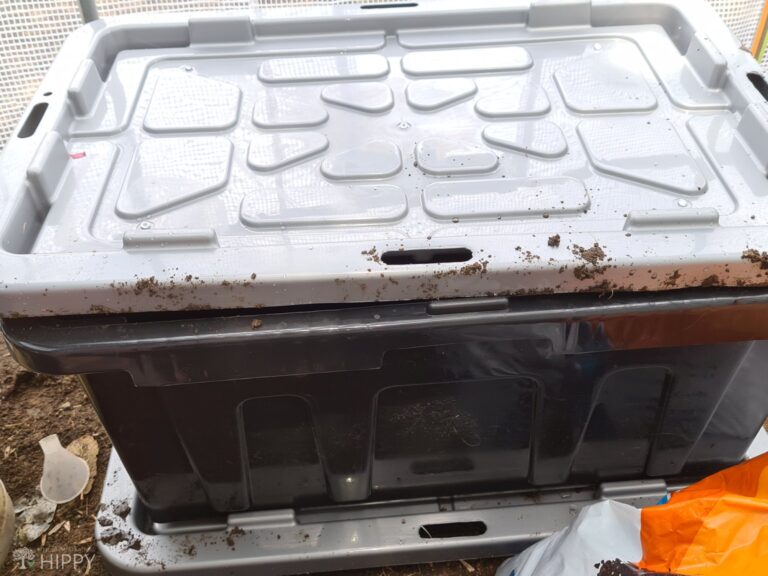
I drilled about 15 holes in the bottom of the box to allow water to drain properly.
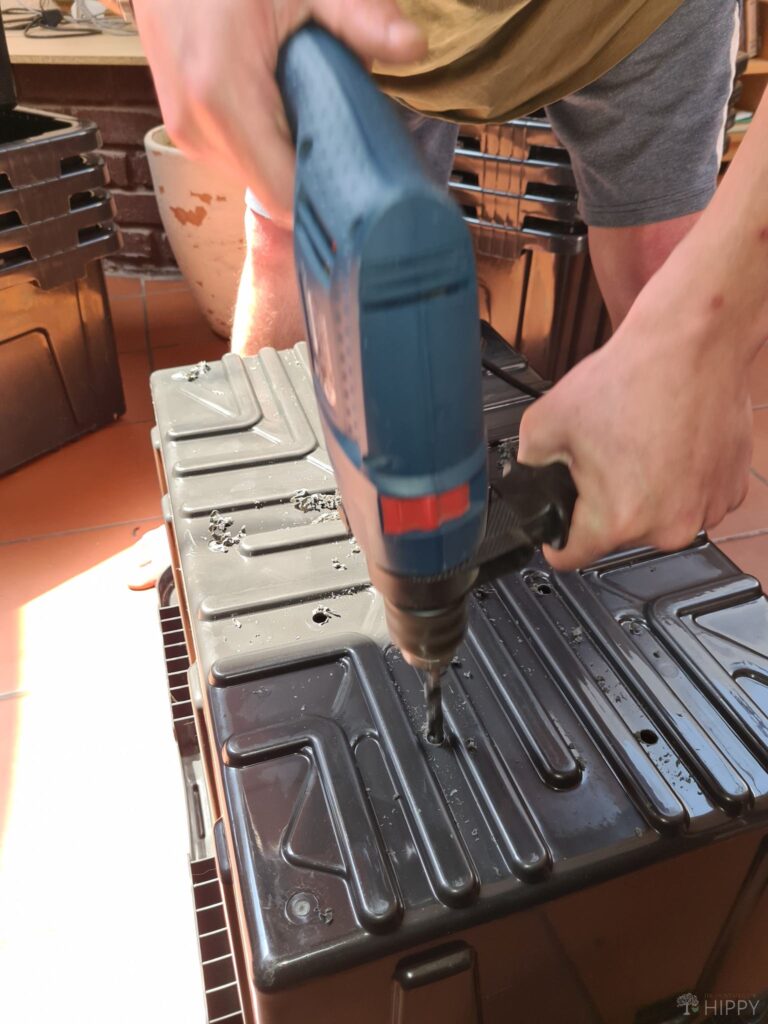
The holes are not too big, we don’t want the soil to escape when it is added.
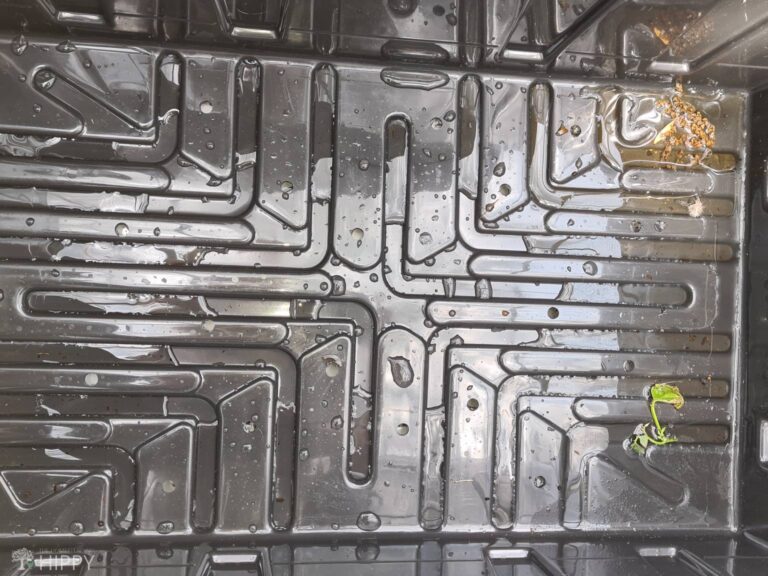
As you can see, the lid for this box has lots of raised features. It was probably made this way to look good, most hold-all’s have at least four raised features for stacking.
These features make them perfect to use as trays. Once watered, the water flows through drainage holes into the tray below.
Lid is used as a tray
These boxes are available in all kinds of colors, even see through, but I chose to use the black ones specifically because in winter the black boxes retain the heat from the sun acting as a heater for the greenhouse at night and also retaining water.
The water is evaporated into the air cooling the greenhouse and increasing the humidity in summer.
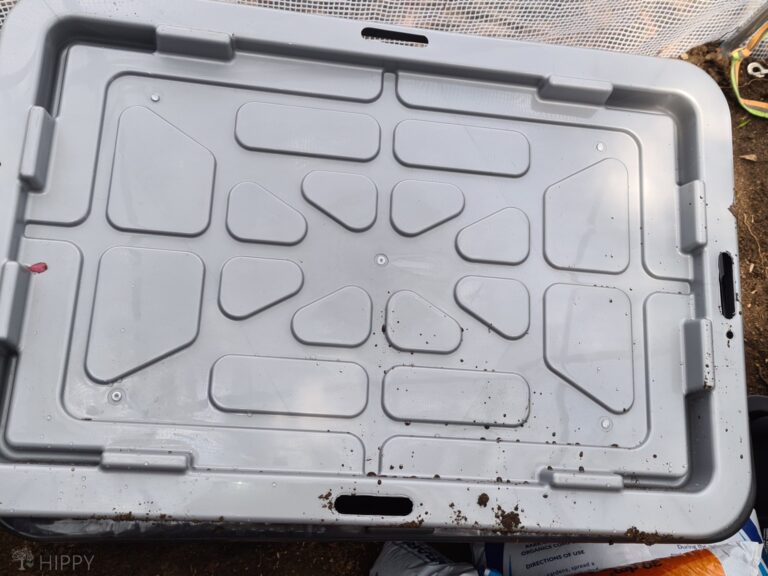
In winter, you may need to empty water trays after watering to prevent a buildup of humidity.
If I had used planters on wood benches, the whole project would have cost at least $400. By using tables with the hold-all’s it cost just $77.
I am controlling the temperature and humidity with this setup, and if I need to move planters around (because they need more light or because the plants need more height or because they are creepers and need more space or I need to plant a new crop) it is easy to do so.
Pebbles
Place some pebbles into a tray and fill the tray with water until the pebbles are covered. Place the trays under your plants. The pebbles will absorb the heat from the greenhouse and cause the water to slowly evaporate increasing the humidity in the greenhouse.
You can do this to build a beautiful feature in your greenhouse. If you are very keen, you could build a reading nook with a pebble floor contained in a large watertight base and just keep the floor wet.
It will look beautiful, benefit your plants, and give you a great place to hide with coffee and a good book.
It is very cost-effective and low maintenance; simply fill the trays daily to ensure the humidity is consistent.
You can combine pebbles with benches to increase heat and humidity. In winter I will be adding a layer of wood shavings on top of the soil in my black planters with pebbles on top to ensure my plants stay warm and to retain moisture:
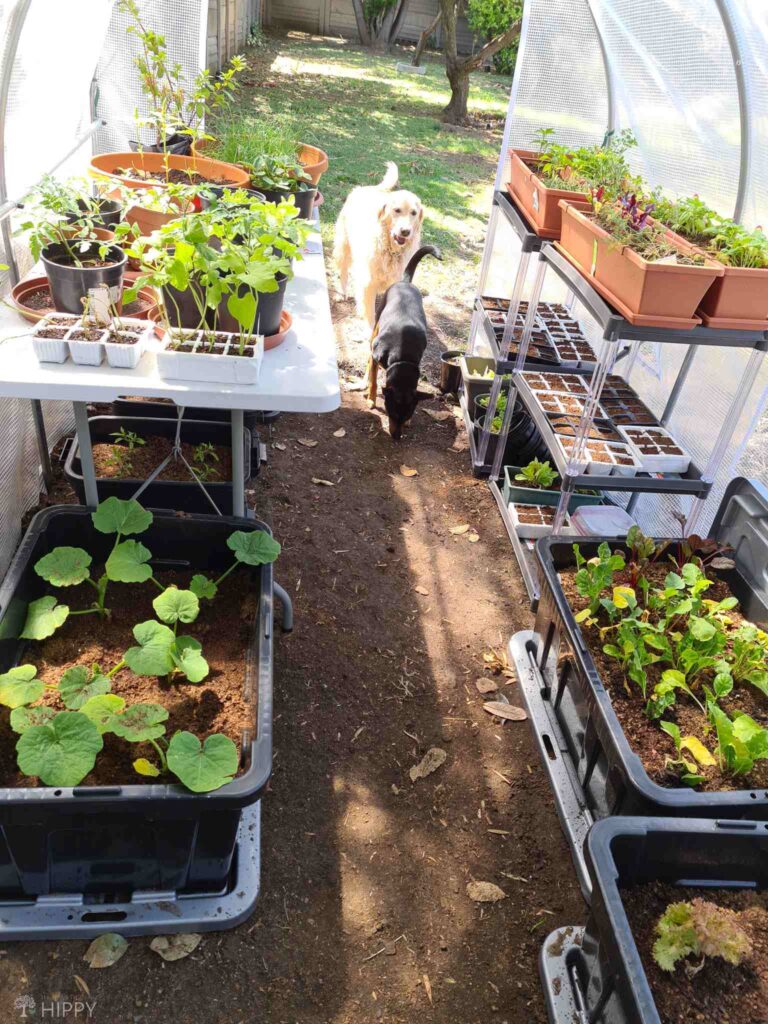
Humidifiers
There are automated humidifiers for greenhouses that constantly monitor the humidity in the greenhouse and automatically switch on or off when the humidity is too low or too high.
Being small scale myself, I don’t need anything the size most automated humidifiers supply.
You can cheaply install a small solar panel to power a regular household humidifier. Don’t leave it on all the time, you don’t want it to overheat.
Water
If the humidity drops, the most basic way of introducing humidity is just to water the plants (not too much at once) and place your buckets of water in your greenhouse.
Summary
When you walk into your greenhouse, it should feel like a comfortable summer day. You want lots of light, humidity, warmth, some shade for the sun-sensitive plants, good soil, and good, healthy plants.
No matter how deep or shallow your pockets are, there are ways to ensure your plants have ideal growing conditions all year. We are all looking for healthy ways to live, and none of us wants to pay a fortune for a healthy lifestyle.
How much you are willing or able to invest in good climate control is up to you. But it is not something that you will need to replace every year and there are very affordable eco-friendly ways to control the climate in your greenhouse.
I do vegetables for six people, so my greenhouse is small and easy to control. In the morning it is in full sun, in the afternoon it is shaded by a big tree.
In winter it will be in full sun all day long. Because of its location and where we live, the temperature in winter will not be below 70°F – a little lower than some plants like but warm enough for my veggies.
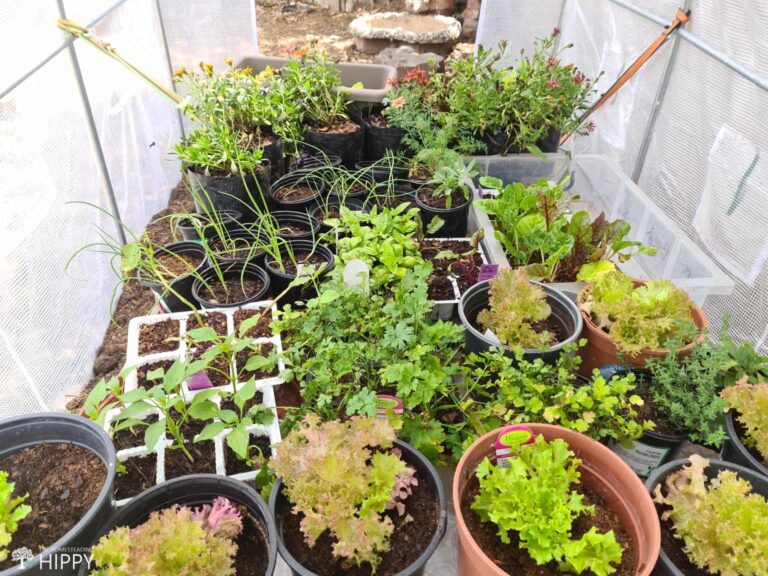
I hope this article helps you prevent (rather than needing to repair) the chaos that can come from poor climate control. Send us some pictures of the features you have in your greenhouse that help you manage the climate in the comments below.
Happy gardening!
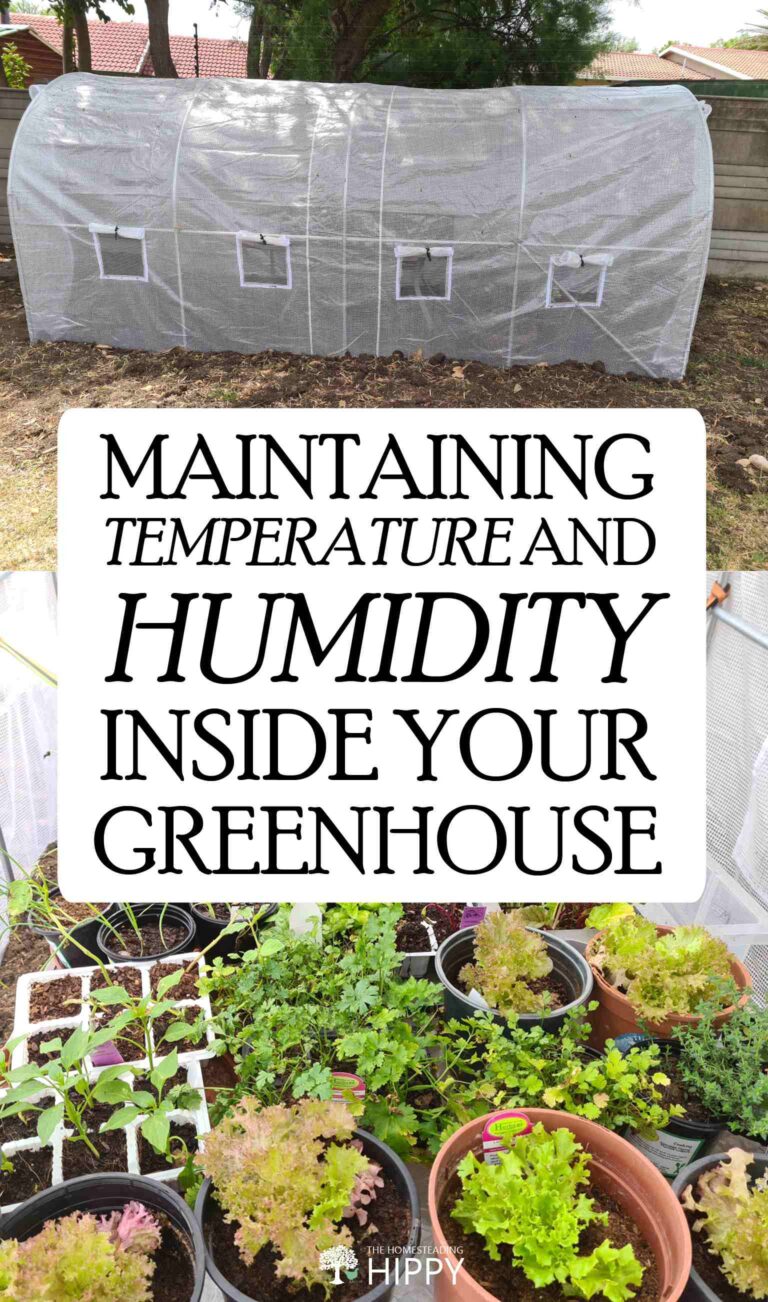

Di-Anne Devenish Seebregts was raised in an environment where daily life consisted of hiking, environmental conservation, growing fruit and vegetables, and raising poultry for meat and eggs.
She combined her passion for the writing word with her love of the pride that comes with not relying on others. She raised three children (who are now adults) to value the environment, and understand the value of being self-sufficient.
Find out more about Di-Anne on our About Us page.
